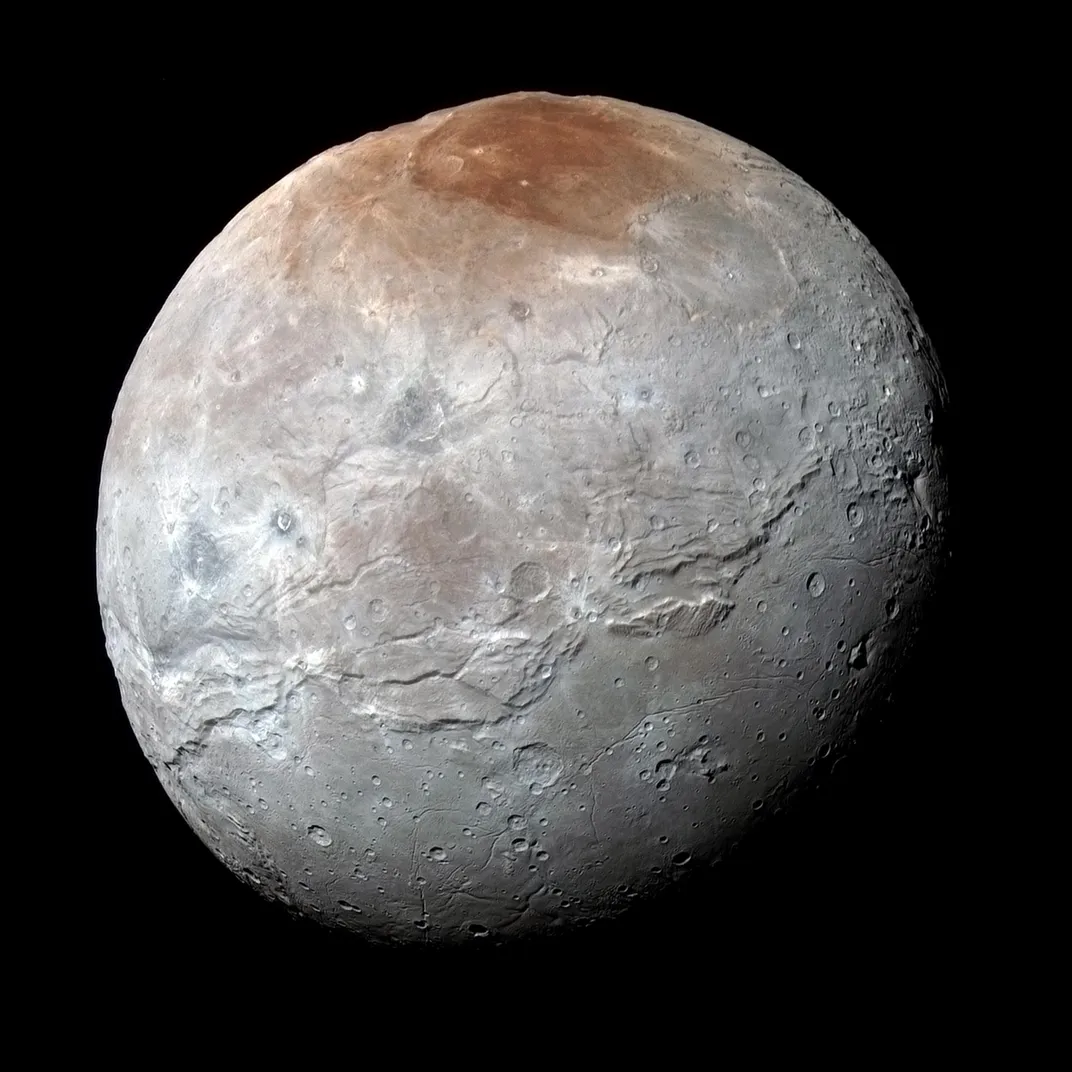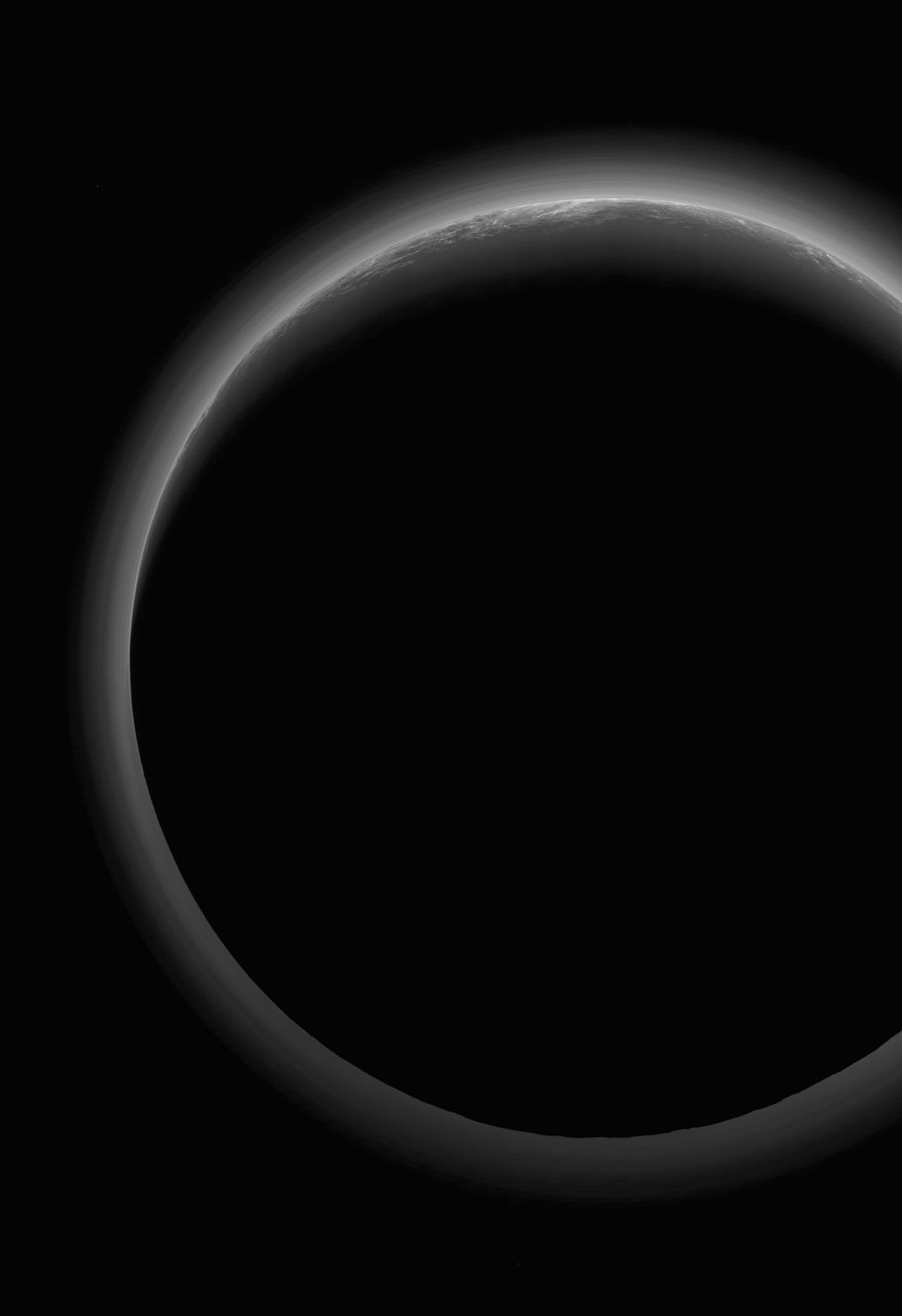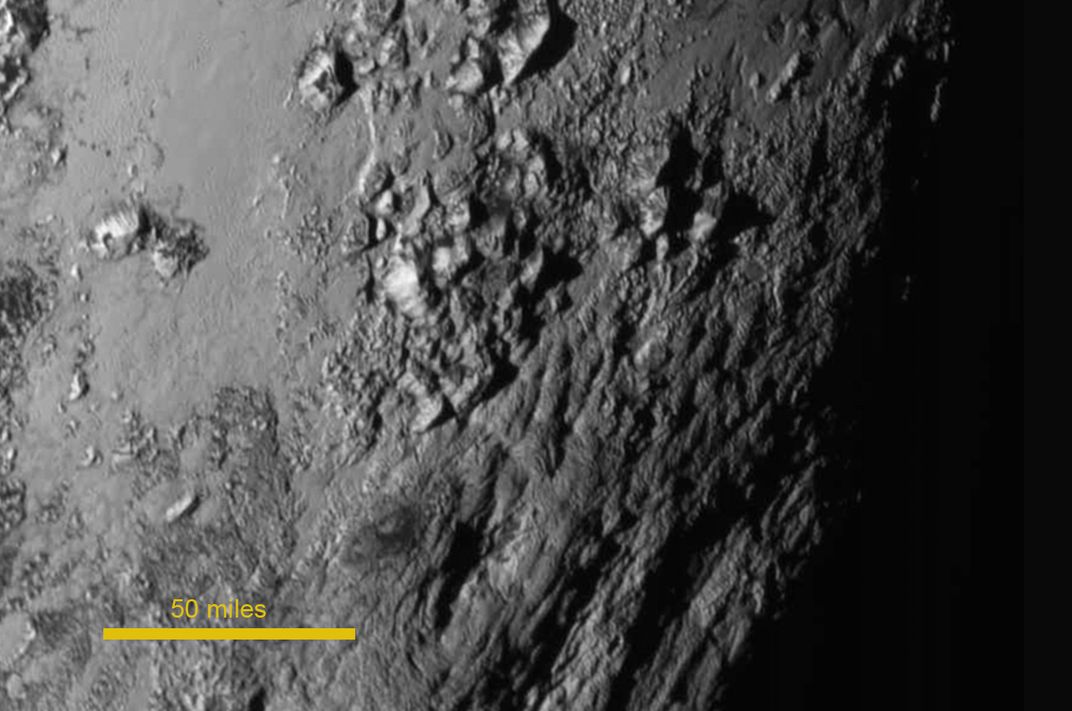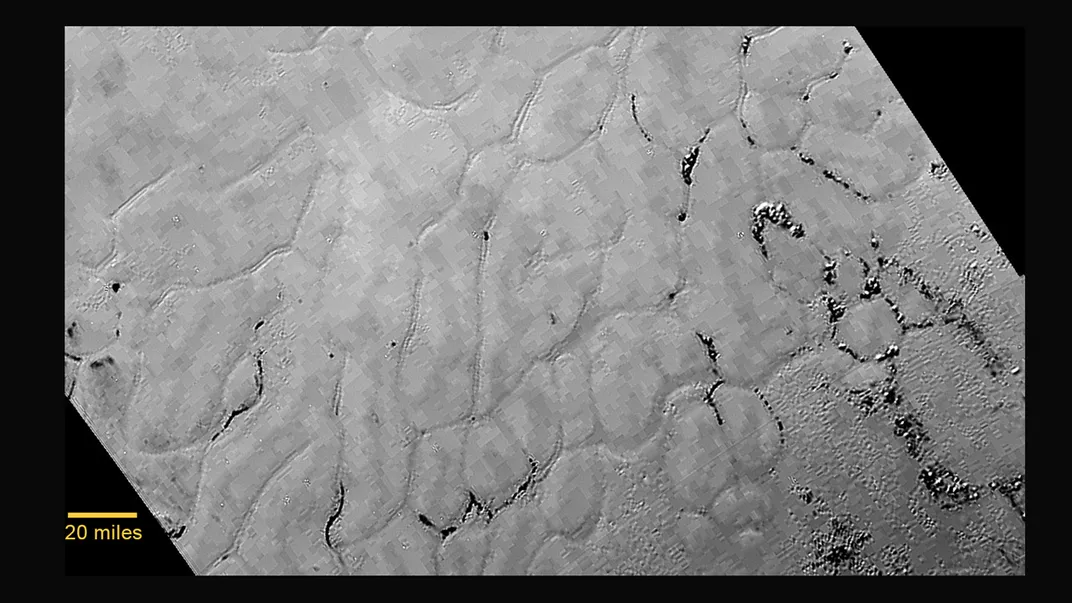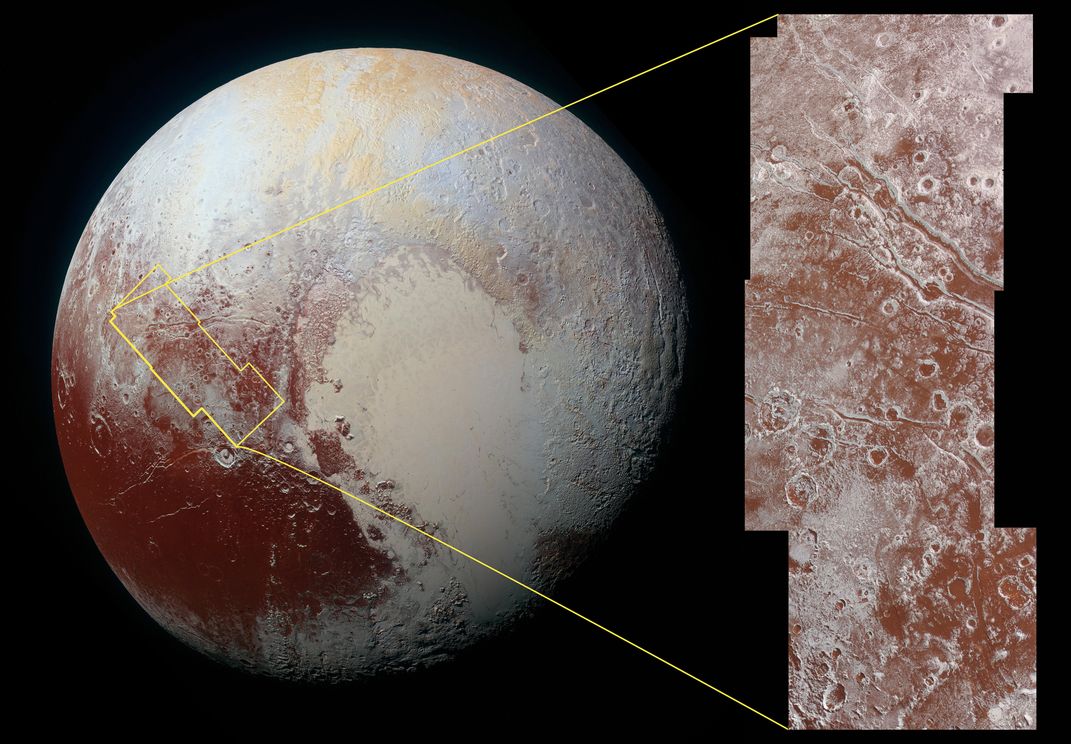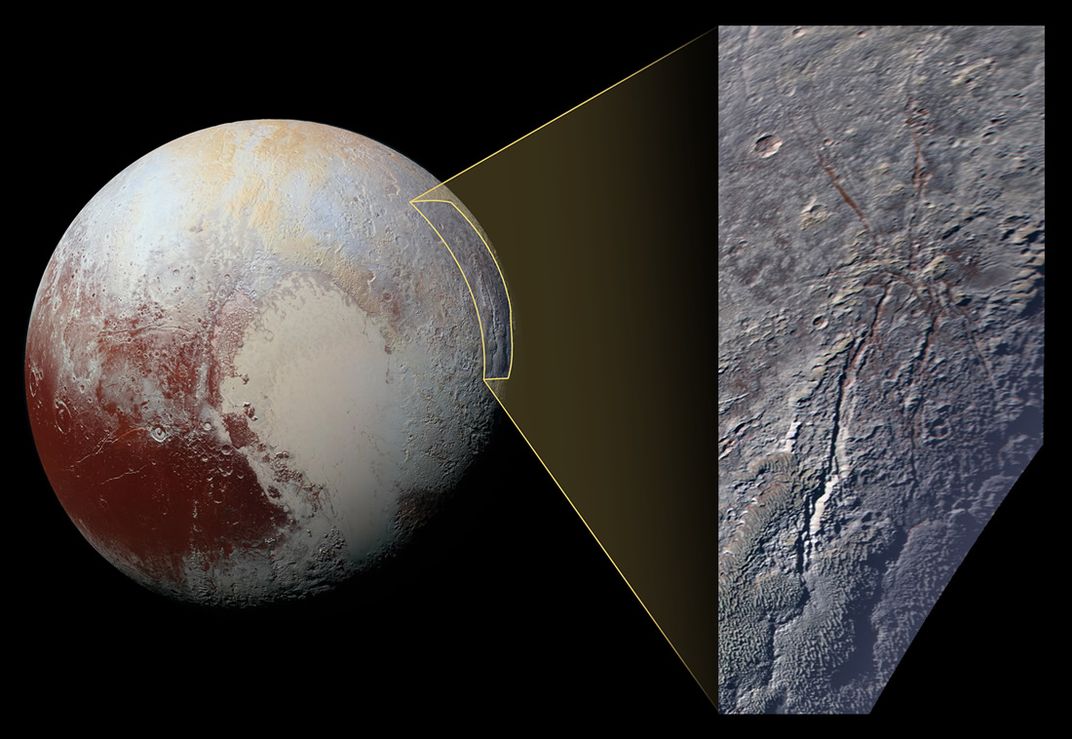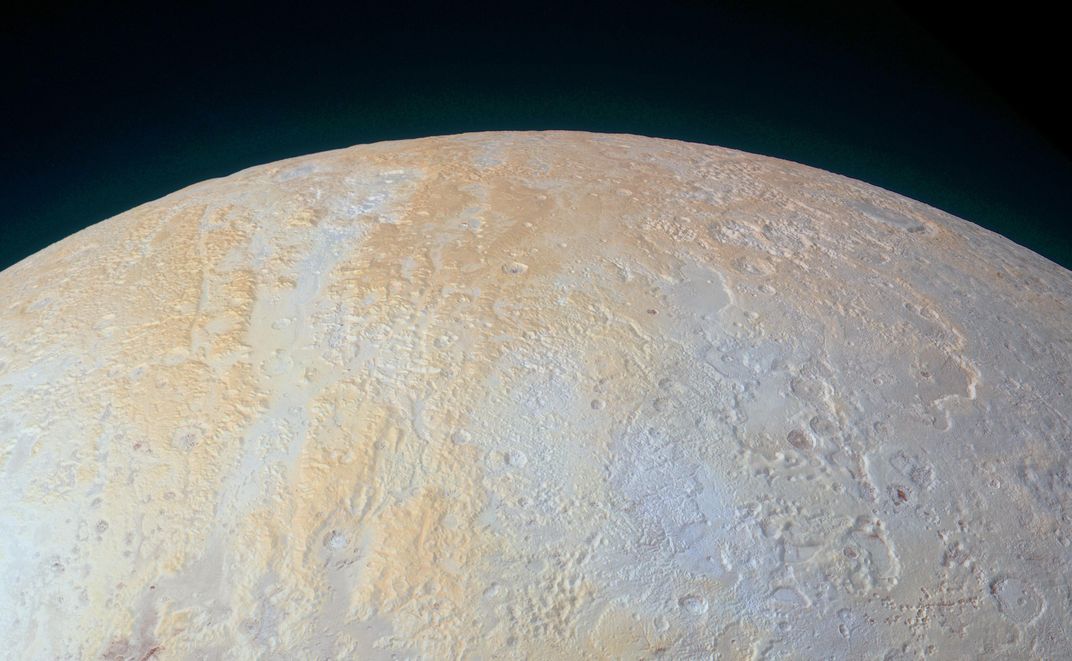Pluto, So Far
New Horizons has finally sent down all its data from the fly-by. What have we learned about the far-away dwarf planet system?
/https://tf-cmsv2-smithsonianmag-media.s3.amazonaws.com/filer/31/ca/31cad7b9-cda9-445e-9902-268e3c179967/2015-8-12-15-plutoenhancedcolorjpg__1072x720_q85_crop.jpg)
New Horizons finally sent its last bit of data down last week from its Pluto fly-by in July 2015. The spacecraft’s distance from Earth, and access to the shared Deep Space Network antennas made getting the data a lengthy process, though not as long as it could have been. Alice Bowman, the missions operations manager, says the project had a few tricks up its sleeve to get the data faster.
“We planned two of these techniques prior to the start of the encounter downlink,” says Bowman. The first, essentially, has the spacecraft send different data simultaneously from its two transmitters. The two signals can be combined using equipment at the DSN. But “to use this mode, the spacecraft has to be spinning,” says Bowman; “we cannot use it when the spacecraft is in three-axis mode, which is used when taking images.” The second, rate stepping, is a well-used technique, and uses the spacecraft’s position when it’s higher in the sky over the DSN antenna. The data signal can be sent at a higher rate because it’s traveling through less atmosphere. “Both of these techniques allowed us to cut the amount of time needed to return the data by approximately half.”
There are always some issues to overcome, and one of those usually involved bad weather causing a signal to drop out. “If we re-planned the data download through our normal process, the turnaround time would be around two months,” says Bowman. “So our team checked for unallocated time”—occasions when there is more time reserved for a specific transmission than data to fill it—“and sent real-time commands to the spacecraft to bring this ‘dropped’ data down in the unallocated space.”
New Horizons is still sailing outward, with a planned fly-by of a Kuiper Belt Object in January 2019, so the Pluto data will eventually need to come off its recorder to make room for new observations. Knowing how I feel whenever I reformat a camera card no matter how many times I’ve checked the transfer, I asked Alan Stern, New Horizons’ principal investigator, if there was any bit of anxiety about hitting that delete key. “As human beings there’s a little bit of emotional tug to that. We have a very thorough triple-check process to make sure that we not only got everything, but that everything we got is in perfect condition,” he says. “We have engineers check it; we have scientists check it; and we have independent scientists check it.” And so far none of those groups have found something that another missed. Once a section is slated to be erased, it doesn’t happen immediately; only when they have more data to take and need the room. And as one final back-up, those sections are erased from least important to most important, on the incredibly low chance something is discovered missing down the line: if it’s important, it’s probably still in the memory banks. “The Pluto system reconnaissance has been a dream for so long,” Bowman adds, “in some ways it’s hard to believe that after all this time we actually have our precious data.” Like Stern, she’s not worried that they’ve missed something, and sees clearing the memory as a sign of victory. “Erasing this encounter data will be the final step in recognizing that the team has performed the first reconnaissance of Pluto, the last in our classical view of the solar system.”
Asked if the mission team learned anything from the Pluto fly-by that they’d implement during the KBO fly-by a few years down the road, Stern says that they over-prepared for Pluto, and he’s happy about that. “The practice that we had, and the back-up plans for the software if it malfunctioned, almost none of it had to be used,” he says. For the KBO fly-by: “Let’s not touch a thing!”
Having the data fully downloaded may be an arbitrary distinction as a milestone, but scientists have already discovered so much since the first bits from the fly-by arrived, it seemed like a good time to review some of the most interesting things we now know about Pluto. When I asked Stern about how his preconceptions of Pluto compared to the evolving reality, he says the dwarf planet turned out to be “much more geologically complex, [with] lots of interesting atmospheric and satellite phenomena. Really I think it’s moved from something wonderful to something bewildering, in a good way.”
Here’s a synopsis of what we know about Pluto today thanks to a spacecraft that flew by at an incredible 32,500 miles per hour. Click the links for more detailed reports of each observation:
Scientists already knew about Pluto’s reddish brown color, which they suspected was due to complex hydrocarbons created when UV light and cosmic rays collide with methane in the atmosphere. As New Horizons approached the dwarf planet, it detected for the first time the indicators that UV light was in fact interacting with the methane.
A week before the fly-by, the spacecraft’s long-range imager gave us the first glimpse of Pluto’s “heart” and the diversity of its terrain. Close inspection of the western lobe of that heart, informally named Sputnik Planitia, has revealed some interesting phenomena. A young mountain range (“one of the youngest surfaces we’ve ever seen in the solar system,” just 100 million years old, compared to the nearly four billion year old planet) suggests recent geological activity, while dark troughs and pits seem to indicate a slow convection driven by warmth under the surface. Scientists began comparing it to a lava lamp, where that internal heat is causing nitrogen ice beneath the surface to warm up, rise up in blobs, and then cool off, creating a surface divided into 10- to 25-mile-wide cells.
An elevation map produced last spring shows that a huge part of Sputnik Planitia is about two miles lower than the surrounding terrain. But, strangely for what seems to be a crater, this region has more mass than the surrounding areas—because of this, Charon is tidally locked with Pluto along this axis. Scientists have a theory that an enormous impact created Sputnik Planitia, and when the crust rebounded, it brought up liquid water from deep underground closer to the surface. This subsurface ocean (liquid water is much denser than the nitrogen ice surrounding the area) may be what’s creating the mass anomaly.
To the west of Sputnik Planitia is a geologically diverse, dark red region called Cthulhu Regio. Here, craters with steep cliffs and methane ice edging the rim are covered in “soot-like” red molecules called tholins (the complex hydrocarbons that color Pluto), while mountains rise up capped in bright methane snow.
Long canyons near the northern pole comprised of much older material than the rest of the planet’s surface give some evidence for tectonics on Pluto in ancient times. Around the planet, methane, nitrogen, and carbon monoxide have complex cycles of evaporation and condensation (on Earth, only water does this). Water ice is widespread across Pluto’s crust; some of it has broken off and is now floating on top of the larger nitrogen ice glaciers. At least two of Pluto’s biggest mountains might be cyrovolcanoes—recently active ice volcanoes. And a “spider” made of surface fractures could mean something underground, perhaps water that froze, and is now welling up to the surface.
Before the fly-by, scientists thought that a huge amount of nitrogen regularly escapes the planet’s gravity because its atmosphere sloughed off behind it like a comet. But now we know that Pluto’s atmosphere is actually cooler and more compact, interacting with solar wind more like Mars and Venus, so it has a much lower atmospheric loss rate—and what’s escaping is mostly methane, rather than nitrogen, even though Pluto’s atmosphere is 99 percent nitrogen.
New Horizon’s long-range imager was pointed through the atmosphere twice: on approach when the stars shined through, and after the spacecraft passed by and turned to look back as the sun shined through the atmosphere; this showed two distinct layers of haze. Haze is more evidence that UV sunlight breaks up atmospheric methane into more complex hydrocarbons. These molecules build-up and condense to form hazy ice, which is broken down again by UV into the dark red tholins that cover so much of Pluto’s surface. The distinctness of the atmospheric layers remains a mystery. Those tholins, by the way, scatter blue light, which means Pluto is less alien to us in one way: it has a blue sky. New Horizons took one image that may even reveal a methane cloud formation.
Those tholins do more than color Pluto. Some of the planet’s escaping atmosphere is pulled in by Charon’s gravity, spray-painting a big red spot on the moon’s northern pole. And that was just one of many of Charon’s surprising features. Instead of being a crater-covered world like our own moon, Charon is covered in diverse landscape features, including an enormous canyon that stretches over a thousand miles and “looks like the entire crust of Charon has been split open.” One theory is that an underground water ocean froze long ago and expanded, cracking the surface. An ocean would also have helped generate cryovolcanoes, and this geological activity left the surface relatively smooth on much of the moon.
We also got our first real views of Nix, Hydra, Styx, and Kerberos—the last two of which were discovered after New Horizons was launched—and found out they’re spinning incredibly fast and wobbling like tops. Most moons in the solar system are synchronized with their planets (our moon rotates once for every orbit around Earth), but Pluto’s moon Hydra, for instance, spins 89 times each orbit. Scientists think Charon, almost as big as Pluto, might have thrown a wrench into the system, making it behave more like a double-planet system than a typical planet-with-moons system. New Horizons picked up something else interesting about Hydra: it’s almost completely covered in water ice.
This is all just a taste of what scientists have gleaned from New Horizons’ observations so far. Stern thinks there are a few things the data is sure to tell us eventually: “I’d like to know why the satellites are tumbling so fast, which was very surprising. I think we’ll solve that with New Horizons. I’d like to know why Sputnik Planitia, the big heart shaped feature on Pluto, is where it is, exactly opposite from Charon, dead center opposite. That’s unlikely to be a coincidence. I’d love to know why all those haze layers form so concentrically in the atmosphere, and I think we’ll get to the bottom of that one too.”
These discoveries won’t end soon, now that all the data is in hand—generations to come will find new ways and new reasons to look over the spacecraft’s measurements. For a little perspective: Astronomers announced last week they may have discovered two new moons orbiting Uranus—from 30-year-old Voyager 2 data.
